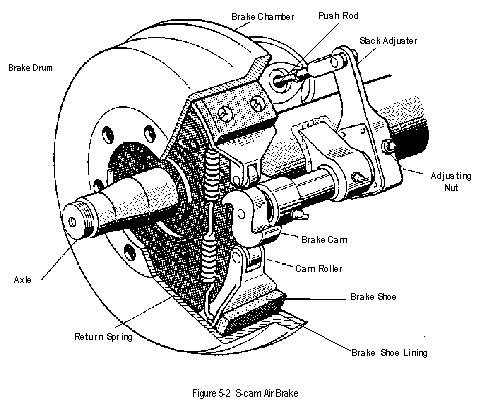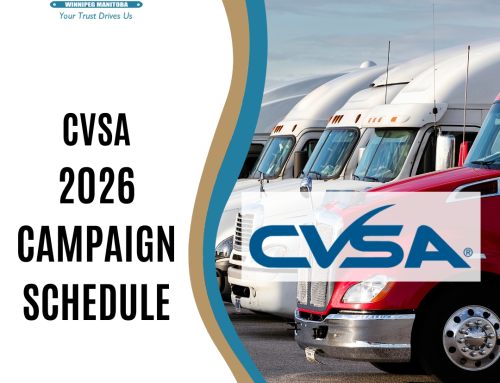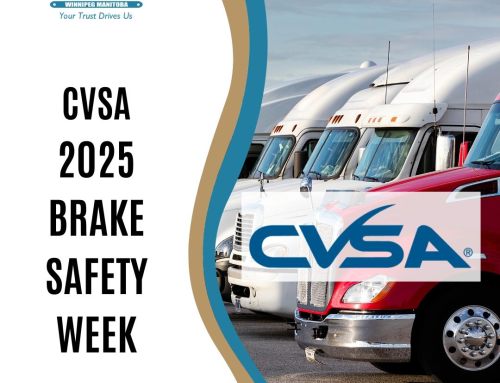
The 2015 Roadcheck program is slated to start on June 2nd and run for a consecutive 72 hours until June 4th. During this time it is estimated that 17 trucks/buses will be inspected every minute.
The information included in the article will help you conduct a proper pre-trip inspection of your brake system so that you can make sure your equipment is running safely down the road. The steps of the inspection should happen daily, not just during Roadcheck and Operation Brake Safety Week.
What the Inspectors are Looking For:
- Missing, non-functioning, loose, contaminated or cracked parts on the brake system.
- “S” cam flip-over.
- Audible air leaks around brake components and lines.
- Slack adjusters are the same length (from center of “S” cam to center of clevis pin), and that the air chambers on each axle are the same size.
- Check brake adjustment.
- Ensure the air system maintains air pressure between 90 and 100 psi.
- Measure pushrod travel.
- Inspect required brake system warning devices, such as ABS malfunction lamps and low air pressure warning devices.
- Inspect tractor protection system, including the bleedback system on the trailer.
What you need to be Checking as Part of Your Pre-Trip Inspection:
Low-air warning device
- Ensure you have air of at least 90 PSI and the ignition is in the ‘On’ position.
- Make brake applications until your low air warnings activate. Warnings should activate at 55 PSI or higher
Air pressure build-up time
- Cut air to your trailer (red valve out)
- Reduce air pressure below 80 PSI
- Maintain 600-900 RPM
- Check the time it takes for the air pressure to rise from 85 PSI to 100 PSI. This time should not exceed two minutes
Air-compressor governor
- Watch the air pressure and note when it ceases to climb (called Cut-Out)
- Reduce air pressure slowly until it begins to climb (called Cut-in)
- Cut-out pressure should not exceed 135 PSI nor be below 100 PSI
- Cut-In pressure should not be less than 80 PSI
Air-loss rate
- Make sure your air pressure is fully charged.
- Turn off your engine
- Release parking brake and make a full brake application for one minute
- Note the pressure drop (ignore the initial drop from making the application. Start it from where the pressure stabilizes. Keep a consistent pressure)
- Loss should not exceed 2 PSI for a single vehicle or 4 PSI for a two-vehicle combination.
Automatic application of the trailer spring brakes
- Make sure your trailer is being supplied (red valve in)
- Dynamite your trailer brakes (red valve out)
- You should hear the air exit the brake indicating the brakes are set
Spring (parking/emergency) brakes
- Set your parking brakes
- Put the vehicle in gear and add light engine power
- The park brakes should hold the vehicle in place
Air-tank drain valves
- Drain the supply tank until it discharges only clean air
- Drain the remaining air-tanks
- Watch the discharge from the air-tanks and ensure that the drain valves function properly
Len Dubois Drivers are Expected to Have Zero Violations
The safety of our drivers, equipment and all motorists on the roadways are of the utmost importance to Len Dubois Trucking. We expect zero violations whenever you are inspected by DOT. If you have any questions about how to complete a proper pre-trip inspection of your brake system please stop by the shop and speak with Dev or Tim.





